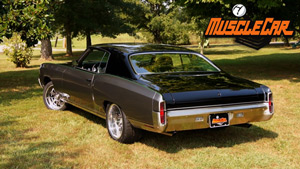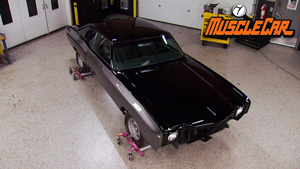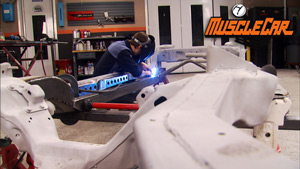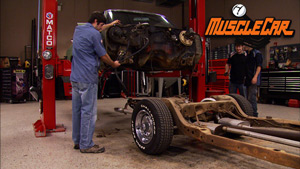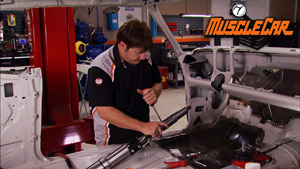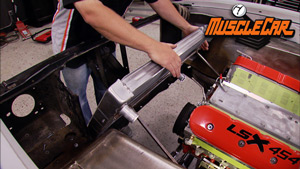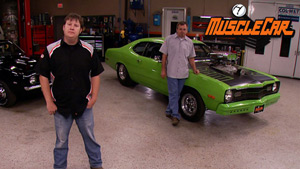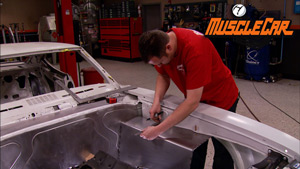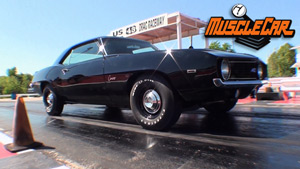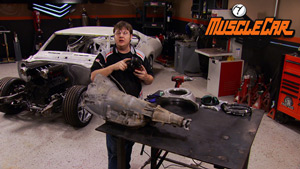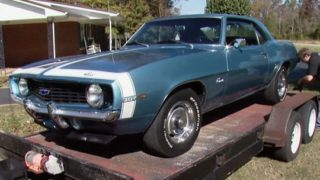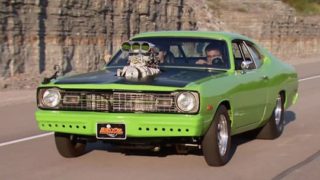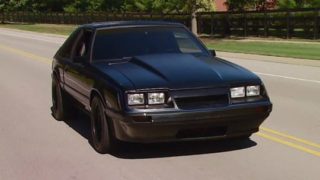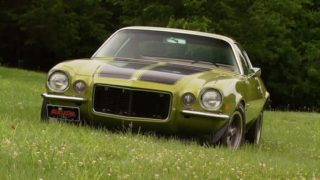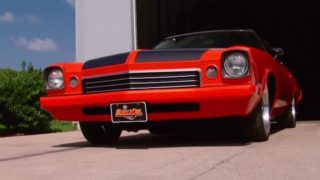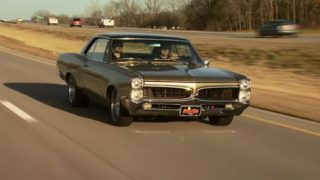MuscleCar Builds
Want more content like this?
Join the PowerNation Email NewsletterParts Used In This Episode
B&M Racing
The B&M Hole Shot torque converter has a stall speed of 3200 rpm, right in the new powerband of the 350 crate engine. Before mounting it, fill it about 1 qt of transmission fluid.
B&M Racing
The rear seal of the trans output shaft can be a major source of fluid leakage. They are inexpensive, so replace it while you have the chance now.
Chevrolet Performance
Many accessories from the stock V-6 with transfer to the V-8, but the flex plate isn't one one of them. So, you'll have to buy a new one and use new bolts to secure it.
Chevrolet Performance
GM Performance 350CID crate engine. Not remanufactured, but new with 4-bolt mains, steel rods,76cc heads, 0.460-inch intake/exhaust lift camshaft, 8.5:1 compression ratio = 290HP and 326 lg-ft torque. All for $1500 new!
Chevrolet Performance
The wider and deeper 350 is going to be a tight fit in the stock engine bay. It will require headers, and for them to clear, a smaller, higher torque starter is required. Plus, it will resist the extra heat the headers will produce. Kevin bolts it in.
Edge Products
Edge Products has these new higher flow electronic fuel injectors that mate directly to stock GM or Bosch wiring harnesses. They can flow up to 83-lb/hr!
Holley
Holley 2-barrel ProJection electronic fuel injection uses specifically optimized manifold (shown). Its two-injector throttle body hooks up to stock wiring harness, but mixture is user-controlled.
JTR
Steath Conversions is the parts portion of Jaguars That Run (JTR). Its full swap kit uses new 2.8 liter motor mounts along w/their laser cut engine mounts (shown), transmission spacer, suppport bearing spacer, pinion angle shim, axle set-back kit, oil filter relocation brackets spacers, and two complete manuals that cover both 2- and 4WD drive S-10 V-8 conversions.
JTR
When you slam a truck the pinion angle changes, and the relationship between the tail shaft and yoke changes, too. Stealth Conversions has all the parts to re-align the driveshaft. Show here is the support bearing spacer, but they have the correct pinion angle shims, too.
Kelderman Mfg.
Oh boy, with Kelderman's 10--12-inch air lift kit you wil be the biggest and baddest on your block. Fully computerized it has all the parts for you to lift your truck high enough where extra oxygen will be needed. Smaller cars will scurry out of your path!
O'Reilly Auto Parts
Be sure to confirm you are using a correct V-8 water pump for the stock V-6 serpentine belt drive. Ours from O'Reilly's Auto uses a 1988 and newer reverse-rotation water pump for a V-8. Your new engine will overheat is the pump runs the wrong direction. Paul gave this cast iron pump a quick spray of aluminum to dress it up and match the other components.
Pertronix
Pertronix also makes Patriot headers for this swap. These are coated inside and out for increased durability for the finish and prevent rusting.
Pertronix
This is why you install the distributor indexed to cylinder #1 BEFORE you bolt in the engine. That's all the clearance the Pertronix small-cap distributor has. It uses a separate coil you can mount remote to it.

